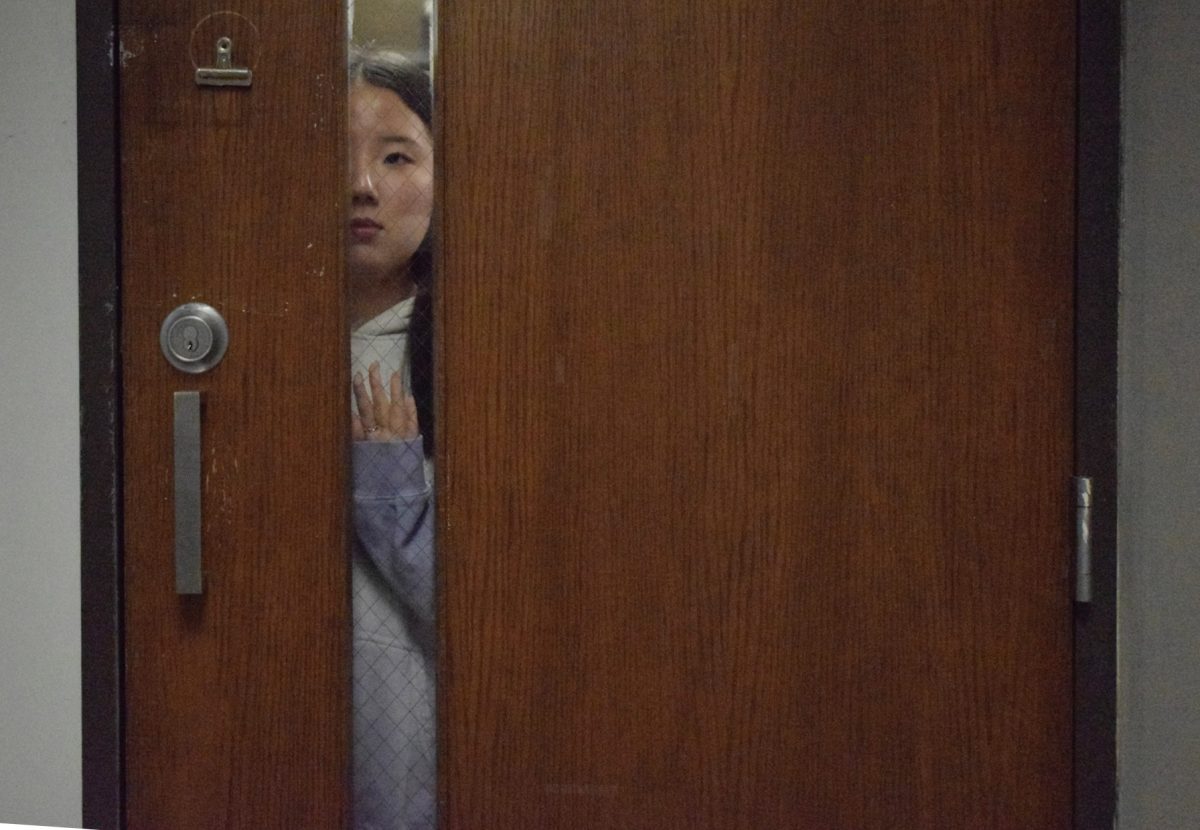With Netflixâs release of the first season of âDAHMER – The Monster: The Jeffrey Dahmer Story,â a glaring spotlight was put on both true crime and its effects on its audience. The show accumulated over 700 million hours of watch time and is the fourth most-viewed show of all time on Netflix.
The series gained popularity since it features the victims rather than the killer, unlike many other true crime anthologies or documentaries that tend to focus mainly on the attacker. In this show, the producers decided to focus on how, in a world full of racism and homophobia, the victims were failed by the police time and time again.Â
True crime can provide insight for viewers because it allows people to see inside the mind of a serial killer, exposes the trauma of their past and gives the audience knowledge of how killers commit their crimes. However, thereâs another side: instead of identifying and allying with the victims, audience members can become obsessed with true crime, leading them to form an empathetic attitude towards the wrongdoer. So, who’s to blame here when talking about true crime and the recent obsession over it?
The exploitation of empathy
When a person watches a TV show or a movie, they spend an extensive amount of time seeing the character’s story unravel. In many true crime documentaries, the producers or writers explore the killer’s traumatic childhood, giving viewers room to empathize with the character. After being exposed to these producersâ manipulative tactics, the viewer more easily justifies the characterâs horrifying actions.Â
Take âDAHMER – The Monster: The Jeffrey Dahmer Story,â for example. The biographical crime drama anthology series was released Sept. 21. Since then, many audience members have taken this story â a story originally meant to show how terrible of a person this racist serial killer, rapist and cannibal is â as an opportunity to romanticize Dahmerâs actions without any regards for the still-alive family of the victims.Â
For the victimsâ families, the series is an unwelcome way of reliving what Dahmer did to their loved ones. Netflix included the experiences of the victimsâ families without asking their permission. During the 11th episode, the series recreated a scene where victim Errol Lindseyâs sister, Rita Isbell, gave her impact statement. In this statement, the defendant conveys the crimesâ impact on their life.Â
âWhen I saw some of the show, it bothered me, especially when I saw myself. It felt like reliving it all over again. It brought back all the emotions I was feeling back then,â Isbell said in an interview with Jackie Strause. âI feel like Netflix shouldâve asked if we mind or how we felt about making it. They didnât ask me anything. Itâs sad that theyâre just making money off of this tragedy. Thatâs just greed.â
As someone that has lost multiple loved ones by murder, Iâll be the first to say that there is a huge gap between losing someone in a gruesome way and losing someone from old age in a peaceful way. Losing a close family member is never something I would ever want to re-live. Displaying that pain in front of the world would open a wound that I had already healed and restart the mourning process. It would be even more painful if the person who took my family away was being romanticized and worshiped the way that viewers are doing with Dahmer. Â
The hashtag #jeffreydahmer has nine billion views on the TikTok platform, with many videos making edits and jokes about the serial killer. Some are going as far as saying that Dahmer âwasnât a monsterâ and was âreally attractive physically.âÂ
In reality, he wasnât the âaestheticâ sad boy with a tragic past like Dahmer defenders paint him. He was a monster. As a result of brutally killing 17 men, Dahmer was dubbed the âMilwaukee Cannibalâ or the âMilwaukee Monster.â His youngest victim, Konerak Sinthasomphone, was only 14 years old when Dahmer sexually assaulted and murdered him.Â
Too often, shows and their viewers dehumanize victims and demonstrate blatant disrespect for victimsâ families in favor of romanticizing a character. This displays the negative effects that viewers can have by creating connections with characters like Dahmer. This manipulated connection blurs the line of empathy and wrong versus right as more true crime series teach viewers to empathize with these killers.Â
So what is the appeal of true crime?
In short, curiosity killed the cat. Human beings are naturally curious; they crave understanding. The human phenomenon of murder is grotesquely fascinating, and itâs natural to want to comprehend why it happens. Normal people want to know what drove a person to the point of killing and what went through their head while committing the act.
Fear is also an appeal. When people feel fear, dopamine â a feel-good chemical â is released into the body. Just like jumping off an airplane or riding a thrilling roller coaster, the adrenaline that violence produces in our brain is the same â the difference being with true crime, we get to experience it from the safety of our home.
âItâs the violence of it all that draws me in, what keeps me coming back for more. Thereâs always something more, something behind the crime, and itâs fun figuring it out,â sophomore Faryal Khurshid said.
Furthermore, watching true crime gives viewers â especially women â an opportunity to learn about self-defense strategies. Since one in every six women becomes a victim of an attempted or completed rape in her lifetime, and women make up most of the serial killersâ victims, it makes sense for most true crime podcast listeners to be females. While many believe that men â the more aggressive sex â are more attracted to true crime, a study showed that women are more drawn to true crime, specifically true crime books that teach them how to defend themselves in the case of being attacked. These books are seen as a framework for detecting potential abusers as they show how the crime was perpetrated, what triggered the attacker and potentially how the victim escaped.Â
For women, true crime teaches warnings and caution signs that could be valuable in being attacked. However, everyoneâs brain can feel the exhilaration of true crime, making us all prone to consume the genre from time to time.
Why is the obsession something to get rid of?
Despite the adrenaline and impression of safety that true crime provides, true crime can often create a sense of paranoia and an increase in anxiety. Becoming fearful of leaving home is a sign that a true crime habit is becoming an unhealthy obsession.Â
Too much alcohol, too much time spent online, and too much of anything can be harmful. When I research crime cases, spiraling down a rabbit hole of cases is inevitable, consuming tragedy after tragedy, each more gruesome than the last.Â
âFor me, true crime is part of my daily life. It’s so compelling, but itâs terrible. Even though it overrides your sense of judgment and morality, something about the violence is so addicting,â Khurshid said. âIt does make me paranoid, though, less trusting.âÂ
Thereâs nothing inherently wrong with watching true crime â I love it. However, viewers need to find a balance between the enjoyment of true crime and still being able to feel empathy. We must reconsider our obsession with these terrorizing stories and understand their adverse impacts on mental health early on. Otherwise, it may take away from our day-to-day lives and lead to romanticizing the people who have done more harm than good.





![There are more than 20 open cardio machines at Crunch Fitness. I enjoyed the spacious environment at Crunch, a sentiment that was shared by sophomore Sanjana Daggubati. â[Going to] Crunch Fitness was the right decision because [it] feels more professional. Crunchâs workers are laid back, but not to the point where they don't care,â Daggubati said.](https://pwestpathfinder.com/wp-content/uploads/2025/09/IMG_5242-1-1200x900.jpg)

![Various empty Kit Kat wrappers crowd the desk, surrounded by scoring sheets. While production of Kit Kat flavors in the U.S. is limited, NestlĂ©, the owner of Kit Kat, manufactures hundreds of unique flavors in Japan, including the flavors ocean salt and passion fruit. âI thought there [were] some interesting flavors, and a lot of them were really unexpected,â senior Elle Levesque said.](https://pwestpathfinder.com/wp-content/uploads/2025/09/image-2.png)


![Pantoneâs selection of the 2025 Color of the Year is revealed: Mocha Mousse. Ceramics teacher Ashley Drissell enjoys this yearâs selection. âMaybe itâs the name but [Mocha Mousse] reminds me of chocolate and coffee. It makes me hungry. Itâs very rich and decadent,â Drissell said.](https://pwestpathfinder.com/wp-content/uploads/2025/02/DSC_0015-1200x800.jpg)


![Sitting courtside before a junior varsity girlsâ tennis match, senior Tanisi Saha rushes to finish her homework. Saha has found herself doing academic work during her athletic activities since her freshman year. âBeing in sports has taught me how to stay organized and on top of my schoolwork. [With] a busy practice and game schedule, Iâve learned to manage my homework and study time better,â Saha said.](https://pwestpathfinder.com/wp-content/uploads/2025/11/DSC_0022-1200x800.jpg)
![Sophomore Maryem Hidic signs up for an academic lab through Infinite Campus, a grading and scheduling software. Some students enjoyed selecting their responsive schedule in a method that was used school-wide last year. âI think it's more inconvenient now, because I can't change [my classes] the day of, if I have a big test coming and I forget about it, I can't change [my class],â sophomore Alisha Singh said.](https://pwestpathfinder.com/wp-content/uploads/2025/10/DSC_0012-1200x801.jpg)
![Senior Dhiya Prasanna examines a bottle of Tylenol. Prasanna has observed data in science labs and in real life. â[I] advise the public not to just look or search for information that supports your argument, but search for information that doesn't support it,â Prasanna said.](https://pwestpathfinder.com/wp-content/uploads/2025/10/DSC_0073-2-1200x800.jpg)
![Junior Fiona Dye lifts weights in Strength and Conditioning. Now that the Trump administration has instituted policies such as AI deregulation, tariffs and university funding freezes, women may have to work twice as hard to get half as far. "[Trump] wants America to be more divided; he wants to inspire hatred in people,â feminist club member and junior Clara Lazarini said.](https://pwestpathfinder.com/wp-content/uploads/2025/05/Flag.png)
![As the Trump administration cracks down on immigration, it scapegoats many immigrants for the United Statesâ plights, precipitating a possible genocide. Sophomore Annabella Whiteley moved from the United Kingdom when she was eight. âItâs pretty scary because Iâm on a visa. When my visa expires next year, Iâm not sure whatâs going to happen, especially with [immigration] policies up in the air, so it is a concern for my family,â Whiteley said.](https://pwestpathfinder.com/wp-content/uploads/2025/05/DSC_0077-7copy.jpg)
![Shifting global trade, President Donald Trumpâs tariffs are raising concerns about economic stability for the U.S. and other countries alike. â[The tariffs are] going to pose a distinct challenge to the U.S. economy and a challenge to the global economy on the whole because it's going to greatly upset who trades with who and where resources and products are going to come from,â social studies teacher Melvin Trotier said.](https://pwestpathfinder.com/wp-content/uploads/2025/05/MDB_3456-1200x800.jpg)



![Some of the most deadly instances of gun violence have occurred in schools, communities and other âsafe spacesâ for students. These uncontrolled settings give way to the need for gun regulation, including background and mental health checks. âGun control comes about with more laws, but there are a lot of guns out there that people could obtain illegally. What is a solution that would get the illegal guns off the street? We have yet to find [one],â social studies teacher Nancy Sachtlaben said.](https://pwestpathfinder.com/wp-content/uploads/2025/01/DSC_5122-1200x800.jpg)

![Sophomore Shree Sikkal Kumar serves the ball across the court in a match against Lindbergh. Sikkal Kumar has been a varsity member of the varsity girlsâ tennis team for two years, helping her earn the number two rank in Class 2 District 2.âWhen matches are close, itâs easy to get nervous, but I [ground] myself by[staying] confident and ready to play,â Sikkal Kumar said.](https://pwestpathfinder.com/wp-content/uploads/2025/11/DSC2801-1200x798.jpg)
![Dressed up as the varsity girlsâ tennis coach Katelyn Arenos, senior Kate Johnson and junior Mireya David hand out candy at West Highâs annual trunk or treat event. This year, the trunk or treat was moved inside as a result of adverse weather. âAs a senior, I care less about Halloween now. Teachers will bring their kids and families [to Westâs Trunk or Treat], but there were fewer [this year] because they just thought it was canceled [due to the] rain. [With] Halloween, I think you care less the older you get,â Johnson said.](https://pwestpathfinder.com/wp-content/uploads/2025/10/DSC00892-1-1200x800.jpg)
![Focused on providing exceptional service, sophomore Darsh Mahapatra carefully cleans the door of a customerâs car. Mahapatra has always believed his customers deserve nothing less than the best. â[If] theyâre trusting us with their car and our service, then I am convinced that they deserve our 100 percent effort and beyond,â Mahapatra said.](https://pwestpathfinder.com/wp-content/uploads/2025/10/DSC_0018-1200x800.jpg)
![Sophomore Aleix Pi de Cabanyes Navarro (left) finishes up a soccer game while junior Ava Muench (right) warms up for cross country practice. The two came to Parkway West High School as exchange students for the 2025-2026 school year. âThe goal for the [exchange] program is to provide opportunities for both Parkway students and our international exchange students to learn about other cultures, build connections and become confident, capable, curious and caring â Parkwayâs Four Câs â in the process,â Exchange Program Lead Lauren Farrelly said.](https://pwestpathfinder.com/wp-content/uploads/2025/10/Feature-Photo-1200x800.png)
![Leaning on the podium, superintendent Melissa Schneider speaks to Parkway journalism students during a press conference. Schneider joined Parkway in July after working in the Thompson School District in Colorado. âMy plan [to bond with students] is to get things on my calendar as much as possible. For example, being in [classes] is very special to me. I am trying to be opportunistic [meeting] kids [and] being in [the school] buildings. I have all the sports schedules and the fine arts schedules on my calendar, so that when I'm available, I can get to them,â Schneider said.](https://pwestpathfinder.com/wp-content/uploads/2025/09/IMG_5425-1200x943.jpeg)
![Gazing across the stage, sophomore Alexis Monteleone performs in the school theater. The Monteleone familyâs band âMonte and the Machineâ has been releasing music since 2012, but Alexis started her own solo career in 2024 with the release of her first single, Crying Skies. âMy whole family is very musical, [and I especially] love writing [songs with them],â Monteleone said.](https://pwestpathfinder.com/wp-content/uploads/2025/09/DSC7463-1200x798.jpg)

![Leaping through the air, senior Tyler Watts celebrates his first goal of the season, which put the Longhorns up 1-0 against the Lafayette Lancers. Watts decided to play soccer for West for his last year of high school and secured a spot on the varsity roster. â[Playing soccer for West] is something I had always dreamed of, but hadnât really had a good opportunity to do until now. Itâs [really] fun being out [on the field], and Iâm glad I decided to join the team. Itâs just all about having fun with the boys and enjoying what time we have left together,â Watts said.](https://pwestpathfinder.com/wp-content/uploads/2025/09/DSC_1951-1200x855.jpg)


Elizabeth Franklin • Dec 5, 2022 at 12:19 pm
This is such a great story, Sabrina! I love how you weave in your personal experiences as well as give a voice to others!
Audrey Ghosh • Dec 5, 2022 at 10:40 am
Wonderful story, Sabrina!